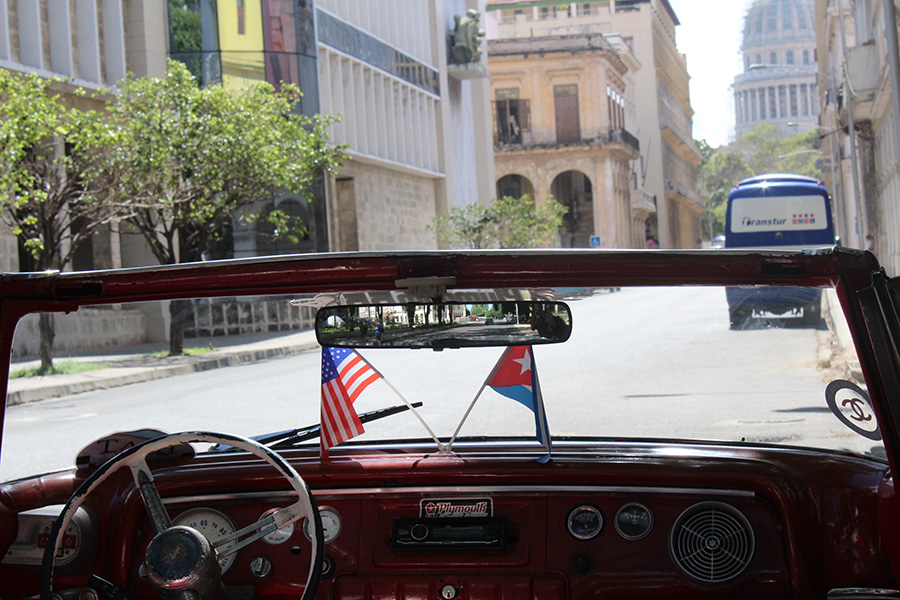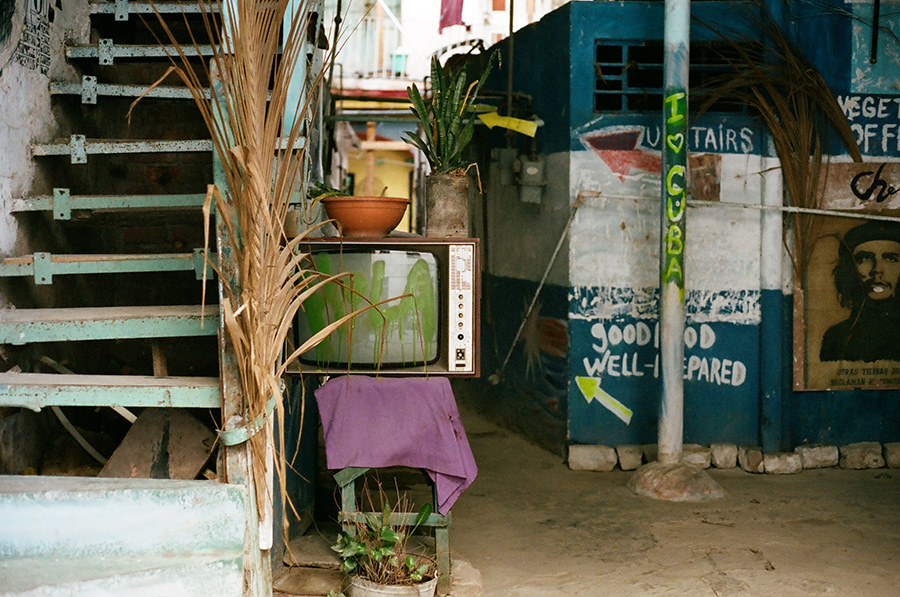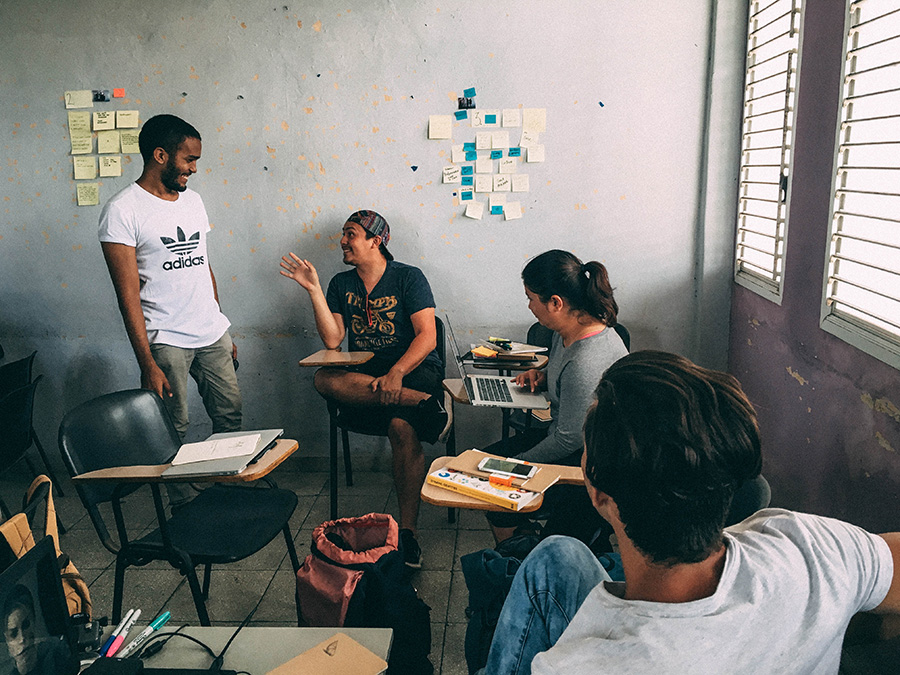
All images courtesy of Fresh Eyes Cuba Project / Designmatters at ArtCenter College of Design
“Through every dialogue something different comes to be.” — H. G. Gadamer, On the Problem of Self-Understanding, 1962.
As part of Designmatters, the social innovation department at ArtCenter, I have long prioritized developing international cultural exchange opportunities for our students. Shaping such initiatives with a sense of purpose has often meant having our faculty build multidisciplinary projects with partner institutions and organizations. These collaborations allow us to “learn by going,” to borrow the famous phrase by the anthropologist Clifford Geertz (Geertz, The Interpretation of Cultures, 1973). They offer transformative sites for field research and co-design, and teach students the value of learning from engagement with the complexities of different cultural realities. And, in many cases, they produce creative solutions that achieve varying degrees of societal impact beyond the walls of our studios.
Led by Professor Nik Hafermaas, chair of our Graphic Design Department, and faculty member and graphic designer Tracey Shiffman, Fresh Eyes Cuba, is the most recent international project in the Designmatters portfolio. This project has brought us the opportunity to collaborate with the communication and industrial design faculty and students from Cuba’s only higher education institution dedicated to design, Havana’s Instituto de Diseño (ISdi). Our 14-week, full-semester collaboration began in October 2016 and was anchored by a field experience in Havana and centered around a four-day workshop that had our students and their Cuban counterparts working in blended teams. Occurring against the backdrop of the nascent renewal of diplomatic ties between our countries, this was, unsurprisingly, an educational exchange of very special significance.
Fresh Eyes Cuba extends our international stream of work in resonant ways that speak of the responsibility of design in these tumultuous times; ones dangerously redefined by a “post-truth” communication playbook and alarmingly charged by a political discourse oriented toward nationalism. But it also marks a departure of sorts from our typical Designmatters studio.
Instead of being driven by a functional objective, as our social innovation projects typically are, the design brief conceived for the 14 ArtCenter and 21 ISdi students who participated in Fresh Eyes was intentionally experimental and unapologetically experiential. Our faculty, keenly aware of the political and cultural entanglements that one cannot escape coming from the United States, took on a facilitation role that sought to be inclusive and open-ended. They framed a set of multisensory prompts for the workshop and then stepped back to allow the collaborative process to unfold, encouraging the Cuban students to guide the conceptual starting points of the investigation. This generated a very symbiotic back-and-forth that built trust and momentum for the teams.


All images courtesy of Fresh Eyes Cuba Project / Designmatters at ArtCenter College of Design
While I did not accompany the ArtCenter group during their field time, I was fortunate to spend time in Havana twice this part year to facilitate the academic partnership and for follow-up lectures as part of my service in the Executive Board of Cumulus, the international association of Universities and Colleges of Art, Design and Media. It was terrific to return to Cuba at the invitation of the Cuban Ministry of Science, Technology and Innovation for the first international conference dedicated to sustainable innovation. My visits and conversations with Cuban colleagues afforded me the opportunity to get a small taste of Cuba’s rich cultural life while venturing slightly beyond the comfort zone of tourism’s bubble. Looking past the faded grandeur of Havana’s built environment, iconic imagery and crumbling infrastructure, I was awed by the frontier-like energy of the place and its people. In this country on the brink of change, the Spanish words expectativas and resolver, which I heard repeatedly from my Cuban friends, capture that sentiment of anticipation and entrepreneurship that is so pervasive and inspiring in present-day Cuba: the conviction that as uncertain as the future may be, it is brimming with possibility. And one better have an ingenious hand for shaping it, for the better.
In more ways than one, Fresh Eyes harnesses the ubiquitous power of the everyday life metaphor that I encountered in the city of Havana. It does so with a great sense of authenticity for, and connection to, the deeply complex social realities that define the island. It challenged all students to gain a reflexive criticality and self-awareness about the worldviews that drive their thoughts and actions—pushing them to learn from one another and design with fresh eyes. It also invited them to create in a resource- and time-constrained environment, and from a place of intercultural dialogue and genuine encounter. The design outcomes of the collaborative workshop were a set of raw, pop-up installations that invited participation and interaction, animating ISdi’s central courtyard in a public and performative showcase. A multimedia exhibition held in our Pasadena campus at the end of the studio extended the collaboration. The exhibition was envisaged less as a polished design outcome of a course’s typical final, and more as the coming together of individual and collective pieces offered by the students as the summation of a deeply personal and transformative experience.

All images courtesy of Fresh Eyes Cuba Project / Designmatters at ArtCenter College of Design
The sense of poignancy and intimate connection that the Fresh Eyes collaboration established is evident throughout the output of the studio. “Centro Cabana: Warehouse” is one of the seven student teams’ installations that captures some of the salient qualities many of us experienced working in Cuba, as we each attempted to see through our respective lenses the beauty, ideals, contradictions and hardships that overlap and collide on the island. This installation hijacks the concept of the traditional Cuban bodega (the neighborhood convenience store that specializes in distributing food rations, a system that has been in place since 1962) and proposes a new kind of supply inventory. The core provocation of the installation redesigns the ration card that each Cuban citizen owns, with the students reimagining the list of essential goods that the possession of this imaginary card would bestow to its holder. For example, instead of carrying commonly subsidized food products such as rice and beans, this utopian bodega promotes a set of moral values for sale that the speculative card makes tangible. Rations of love, honesty, integrity and friendship are available at “surprise” prices for any taker who is intent on nurturing the wellbeing of their community.
The power of visual metaphor and design’s aesthetic dimension as a way forward for cultural rapprochement and social transformation is illustrated in this installation and is a personal reminder of why experiencing international design projects such as Fresh Eyes Cuba matters more than ever for our students. These projects cultivate a capacity to look at the world, and be in the world with a strong sense of creative presence and newfound appreciation for the differences that shape us as human beings.
In his towering contribution about the power of art as experience—and one should include design here as well—John Dewey reminds us that “in a world full of gulfs and walls that limit community of experience,” works of art are “the only media of complete and unhindered communication between man and man.” (Dewey, Art as Experience, 1934). Here’s to many projects in 2017 that will inspire designers, through experience, to continue bridging those gulfs and hurtling those walls, bringing us together as people.

Pop-up installation, Centro Cabana designed by (Adrian Alverez, Diego Gzegozewski, Mikey Rosales, Ernesto Valladares, & Viviyan Zoechling ). All images courtesy of Fresh Eyes Cuba Project / Designmatters at ArtCenter College of Design
The author would like to acknowledge Victor Margolin, Professor Emeritus of Design History at the University of Illinois, Chicago, for the initial introduction to colleagues at ISdi in July 2015 that led to this collaborative project, and thank the students of ArtCenter and ISdi that brought it to life.
